Why It’s Important To Keep Brisket Warm
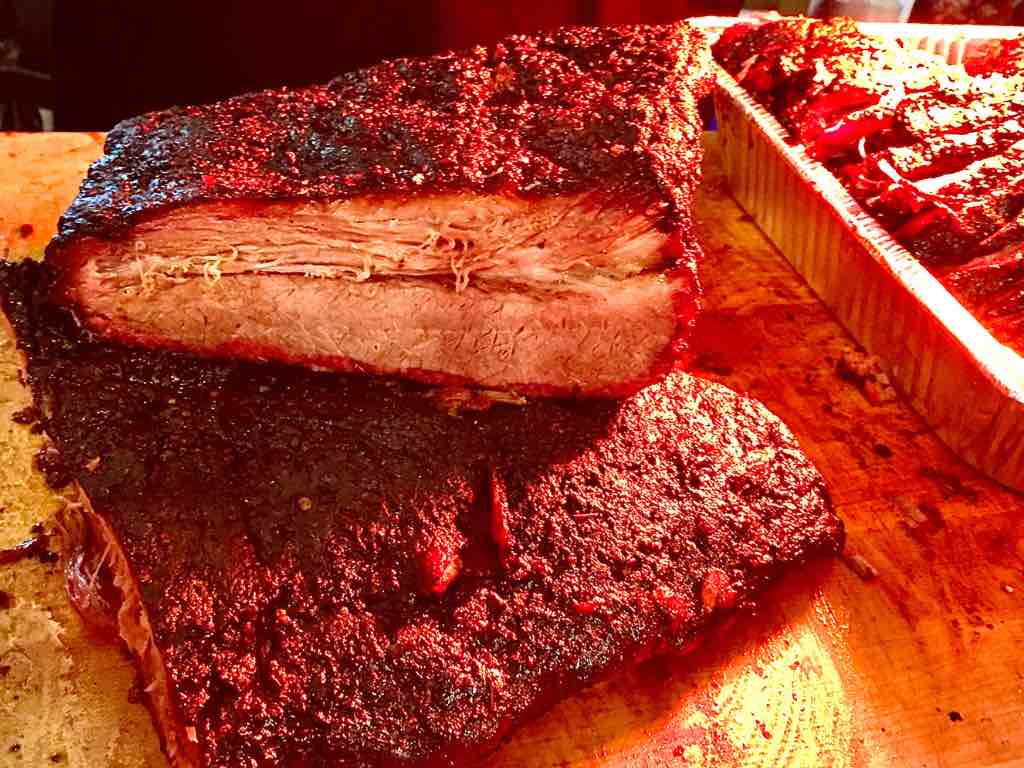
Keeping brisket warm is important to retain its juicy flavor and ensure a tender texture. When brisket is cooked to perfection, it is essential to maintain its temperature to prevent it from drying out. Warm brisket allows the flavors to meld together and keeps the meat moist and succulent. Additionally, serving warm brisket enhances the overall dining experience, making it more enjoyable for guests. By properly wrapping and storing the brisket, utilizing insulation methods, and utilizing kitchen appliances, you can ensure that your brisket stays warm and delicious for extended periods.
The Significance Of Retaining Juicy Flavor In Brisket
Retaining the juicy flavor in brisket is crucial for an outstanding dining experience. Juiciness in brisket is a result of the perfect moisture balance within the meat. When brisket is warmed properly and maintained at the right temperature, it allows the flavors to meld together, resulting in a mouthwatering and succulent texture. A juicy brisket is also more enjoyable to eat, as it provides a satisfying and tender bite. By keeping the brisket warm, you can ensure that every slice remains moist and full of flavor, enhancing the overall taste and satisfaction for your guests.
The Impact Of Temperature On Brisket Texture And Taste
The impact of temperature on brisket texture and taste is significant. The temperature at which brisket is cooked and kept warm plays a crucial role in achieving the desired texture and flavor. Cooking brisket at a low and slow temperature allows the collagen in the meat to break down, resulting in a tender and moist texture. However, if the temperature is too high or the brisket is not kept warm properly, the meat can become tough and dry. Additionally, maintaining the right temperature during the resting period helps the flavors to develop and meld together, enhancing the overall taste of the brisket.
Preparing Brisket For Long-term Warmth
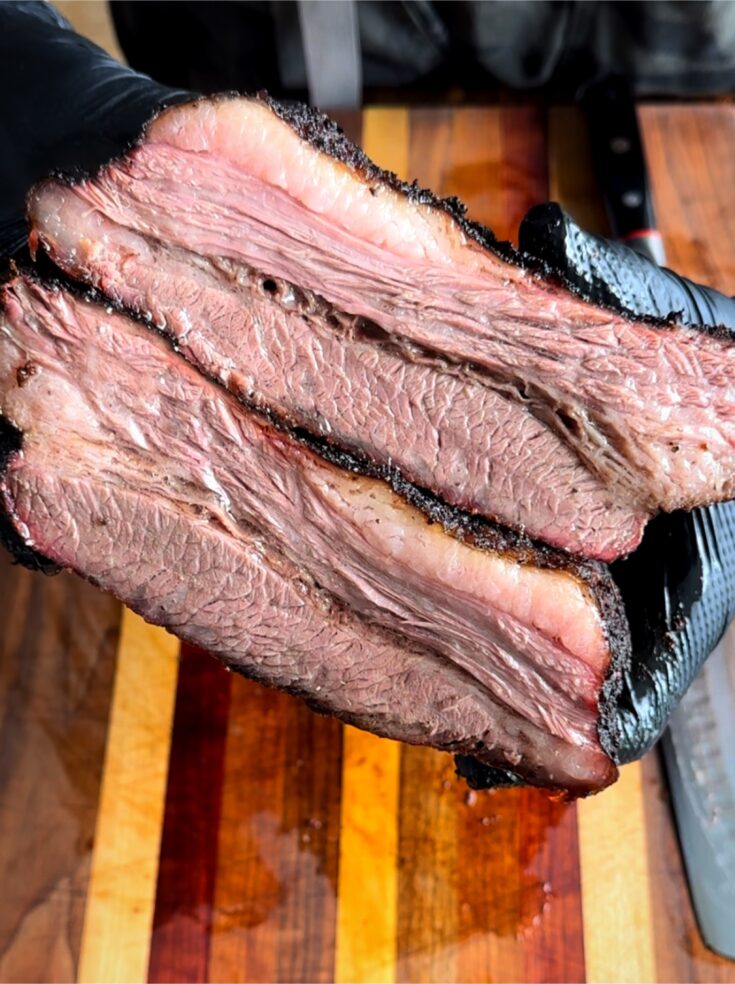
Properly cooking and resting brisket is essential for achieving long-term warmth. Start by cooking the brisket at a low and slow temperature, allowing the collagen to break down and the meat to become tender and juicy. Once cooked, wrap the brisket tightly in foil or butcher paper to keep it warm for an extended period. For added insulation, place the wrapped brisket in a cooler or insulated container. This will help retain heat and maintain the desired temperature. Preparing the brisket properly ensures that it stays warm and succulent until it’s time to serve.
Properly Cooking And Resting Brisket
Properly cooking and resting brisket is essential for achieving the desired level of warmth and tenderness. Start by cooking the brisket at a low and slow temperature, allowing the collagen to break down and the meat to become juicy and flavorful. This can be done through methods such as smoking or roasting in an oven. After cooking, it is crucial to let the brisket rest before serving. Resting allows the juices to redistribute throughout the meat, resulting in a more tender and flavorful brisket. The ideal resting time is around 30 minutes to an hour, covered loosely with foil.
Techniques For Wrapping And Storing Cooked Brisket
One technique for wrapping and storing cooked brisket is to tightly wrap it in aluminum foil. This helps retain moisture and keep the brisket warm. Another method is to wrap the brisket in butcher paper, which allows for some air circulation while still keeping the meat moist. Additionally, some people use vacuum sealers to package the brisket, which can help preserve it for longer periods of time in the refrigerator or freezer. Properly wrapped and stored, cooked brisket can stay fresh and flavorful for several days.
Using Insulation Methods
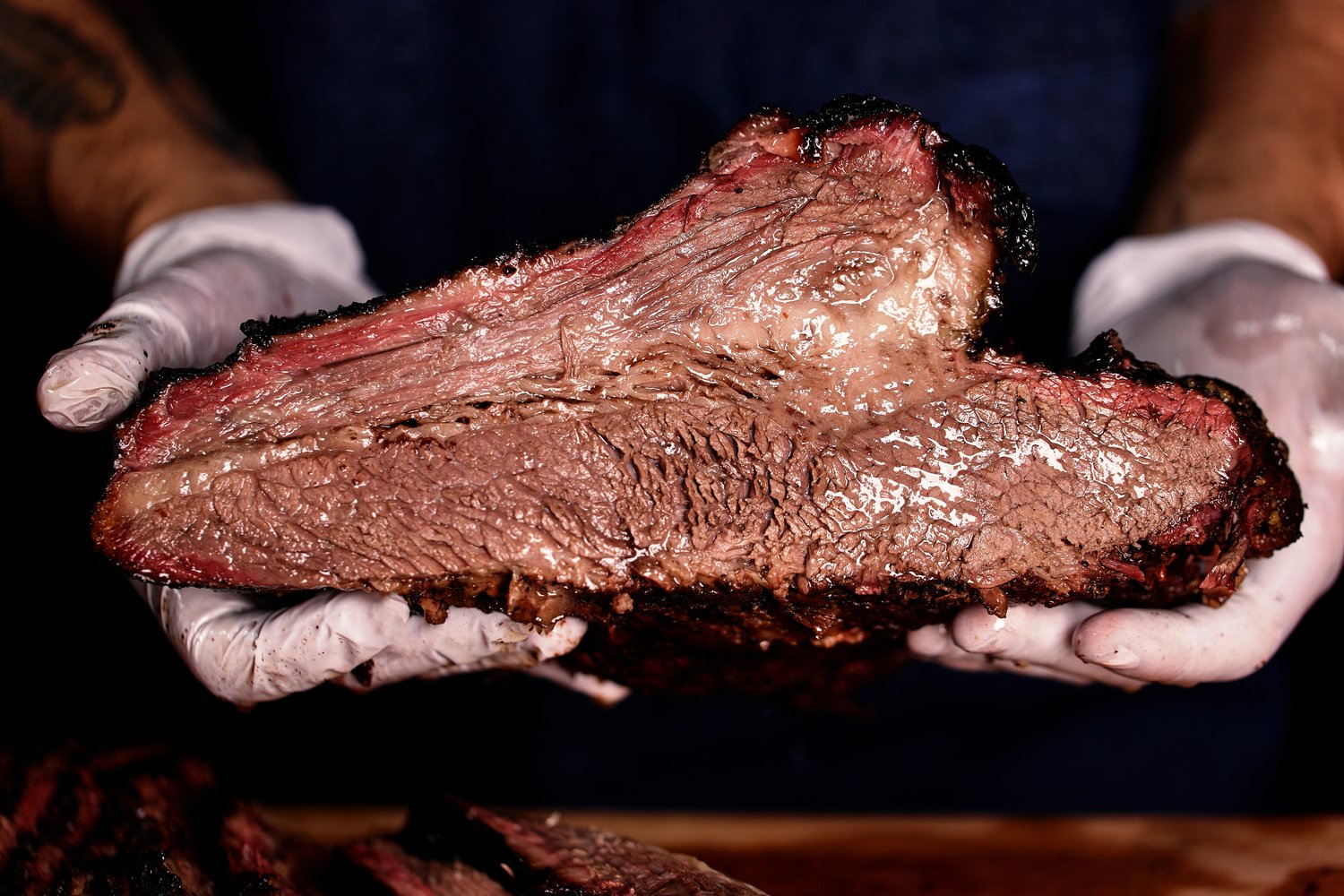
Using insulation methods is an effective way to keep brisket warm for extended periods. Insulation materials such as aluminum foil, butcher paper, or insulated coolers can help retain heat and moisture in the meat. Double or triple wrapping the brisket in foil and storing it in an insulated cooler with towels can help maintain its temperature for several hours. Another option is to use a Cambro, a type of insulated box, which can keep the brisket warm for up to four hours. However, it’s important to note that using insulation methods may affect the crispiness of the bark.
Insulation Materials To Keep Brisket Warm
To keep brisket warm for extended periods, there are several insulation materials that can help retain heat and moisture. These materials include aluminum foil, butcher paper, and insulated coolers. Double or triple wrapping the brisket in foil can help trap the heat and maintain its temperature. Alternatively, using butcher paper can allow the brisket to breathe while still retaining its warmth. Insulated coolers are also a great option as they provide additional insulation and can keep the brisket warm for several hours. It’s important to choose the right insulation method based on your specific needs and preferences.
Creating A Makeshift Warmer With Household Items
Creating a makeshift warmer with household items is a convenient and cost-effective way to keep your brisket warm. One option is to use a cooler, lined with towels or blankets, to insulate and retain heat. Simply place the wrapped brisket inside and close the cooler tightly. Another method is to heat some bricks in the oven and wrap them in towels. Place the hot bricks on the bottom of a cooler, followed by the wrapped brisket. This will help maintain the temperature for an extended period. Remember to handle the hot bricks with caution.
Utilizing Kitchen Appliances

When it comes to keeping brisket warm, utilizing kitchen appliances can be a game-changer. One option is to use the oven to maintain the temperature of your cooked brisket. Simply preheat the oven to a low temperature, around 200°F (93°C), and place the wrapped brisket inside. This will help retain its moisture and prevent it from drying out. Another option is to use slow cookers or sous vide machines. These appliances are designed to keep food warm for extended periods, making them ideal for keeping brisket at the perfect serving temperature. Just ensure you follow the manufacturer’s instructions and set the temperature accordingly. With these kitchen appliances, you can enjoy tender and juicy brisket whenever you’re ready to serve.
Using The Oven To Warm Brisket
To use the oven to warm brisket, preheat it to a low temperature, around 200°F (93°C). Place the wrapped brisket in a pan or dish and cover it tightly with aluminum foil to retain moisture. Place the brisket in the oven and let it warm for about 45 minutes to an hour, or until the internal temperature reaches 165°F (74°C). The low temperature and slow heating process in the oven help maintain the tenderness and juicy flavor of the brisket. Make sure to monitor the internal temperature to prevent overcooking.
Keeping Brisket Warm With Slow Cookers Or Sous Vide Machines
Slow cookers and sous vide machines are excellent tools for keeping brisket warm after it has been cooked. Slow cookers provide a gentle, consistent heat that helps to maintain the moisture and tenderness of the brisket. Simply place the cooked brisket in the slow cooker, set it to the “warm” or low temperature setting, and let it sit until ready to serve. Sous vide machines, on the other hand, use a water bath to heat the brisket to a specific temperature and hold it there. This method ensures precise and controlled heating, resulting in a perfectly warmed brisket with minimal risk of overcooking. Both slow cookers and sous vide machines are convenient options for keeping brisket warm and can be a great addition to your kitchen arsenal.
Wrapping And Resting Brisket For Optimal Warmth
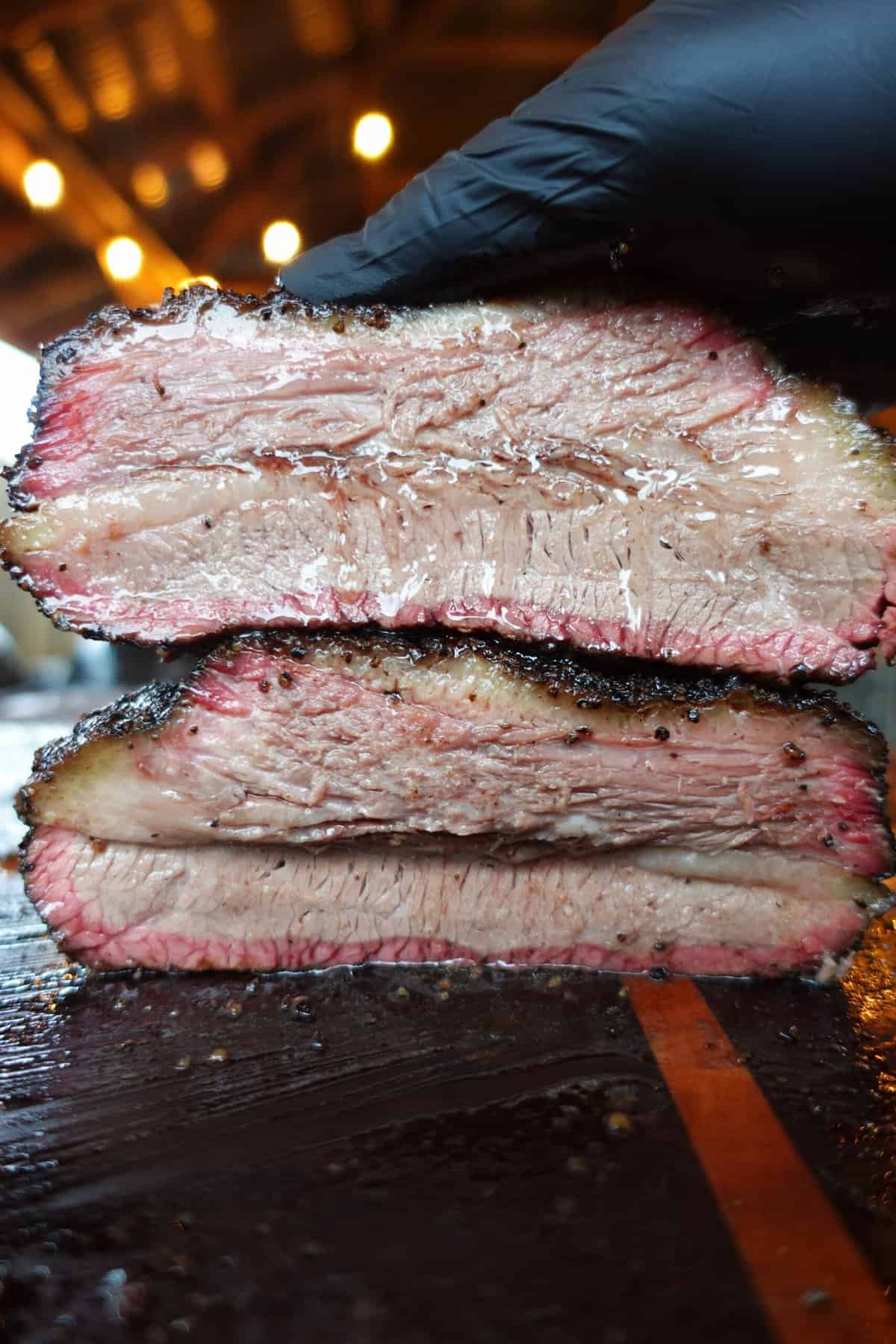
To ensure optimal warmth and retain moisture in brisket, wrapping and resting are essential steps. Wrapping the brisket in foil or butcher paper after cooking helps to trap the juices and maintain its temperature. This process allows the meat to continue cooking and tenderizing while preserving its delicious taste. Resting the wrapped brisket for at least 30 minutes allows the juices to redistribute, resulting in a more juicy and tender finished product. Proper wrapping and resting techniques are crucial for achieving the desired warmth and juicy flavor in your brisket.
The Benefits Of Wrapping Brisket In Foil Or Butcher Paper
There are several benefits to wrapping brisket in foil or butcher paper.
- Moisture retention: Wrapping the brisket helps seal in the moisture and juices, preventing them from evaporating and keeping the meat moist and tender.
- Enhanced flavor: The foil or butcher paper creates a barrier that traps the smoky flavor, allowing it to infuse into the meat and enhancing the overall taste.
- Bark preservation: Wrapping helps preserve the exterior bark of the brisket. Foil can help maintain a softer bark, while butcher paper allows for a slightly crispier texture.
- Heat insulation: The wrap acts as insulation, keeping the brisket warm and allowing it to continue cooking slowly, resulting in a more tender and flavorful final product.
By wrapping the brisket in foil or butcher paper, you can ensure that it retains its moisture, flavor, and tenderness for a delicious and enjoyable dining experience.
Resting Brisket Properly To Retain Moisture And Tenderness
Resting the brisket is a crucial step in retaining its moisture and tenderness. After cooking, it is important to let the brisket rest for at least 30 minutes before slicing. This allows the juices to redistribute throughout the meat, ensuring that every bite is juicy and flavorful. During this resting period, the brisket continues to cook through carry-over cooking, resulting in a soft and tender texture. Wrapping the brisket in foil or butcher paper during the resting period helps to further retain the moisture and keep the meat succulent. By properly resting the brisket, you can ensure a delicious and satisfying dining experience.
Serving And Enjoying Warm Brisket
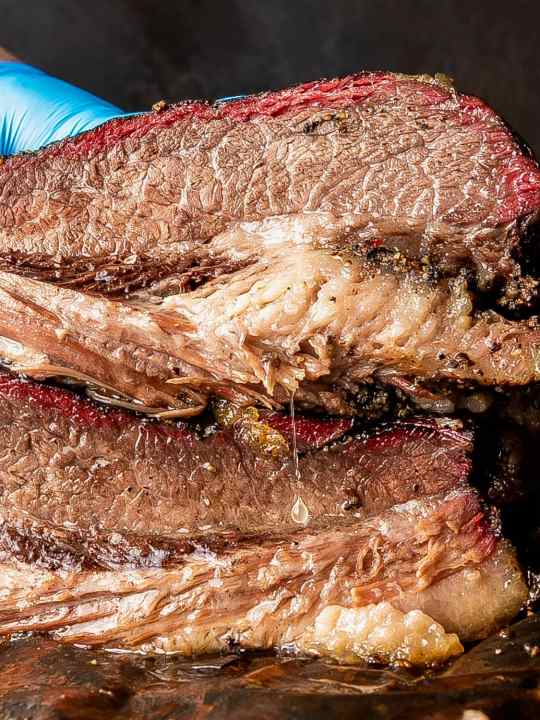
To serve and enjoy warm brisket, it is important to slice it against the grain to ensure tenderness. The slices should be thick enough to maintain moisture but thin enough for easy chewing. Serve the brisket on a platter or individual plates, and accompany it with delicious sides such as coleslaw, baked beans, or cornbread. For added flavor, offer a variety of barbecue sauces or homemade gravy. The combination of juicy, warm brisket with complementary sides and sauces will create a satisfying and mouthwatering meal for any brisket lover.
Slicing Techniques For Warm Brisket
When slicing warm brisket, it is important to cut against the grain to ensure tenderness. Start by identifying the direction of the grain, which is the lines running through the meat. Using a sharp knife, slice perpendicular to the grain in thick slices to help retain moisture and juiciness. The thickness of the slices should be enough to maintain the brisket’s flavor but thin enough for easy chewing. By slicing against the grain, you’ll end up with tender, flavorful pieces of warm brisket that will be a hit at any gathering.
Pairing With Delectable Sides And Sauces For A Complete Meal
To complement the warm and juicy brisket, it’s important to pair it with delectable sides and sauces for a complete meal. Here are some classic options to consider:
- Classic BBQ sides: Serve your brisket with traditional barbecue sides like coleslaw, baked beans, cornbread, and potato salad. These classic sides add a variety of flavors and textures to the meal.
- Grilled vegetables: Fire up the grill and cook some delicious vegetables like corn on the cob, bell peppers, and zucchini. The charred and smoky flavors will perfectly complement the brisket.
- Mac and cheese: Creamy and cheesy mac and cheese is always a crowd-pleaser. Its rich and indulgent taste pairs well with the robust flavors of the brisket.
- Tangy BBQ sauce: A tangy and flavorful barbecue sauce is a must-have condiment for any brisket meal. Whether it’s a sweet and spicy sauce or a traditional smoky flavor, it adds an extra layer of deliciousness to the meat.
- Pickles and onions: Serve sliced pickles and onions on the side to add a refreshing and tangy element to the meal. They provide a nice contrast to the rich and savory flavors of the brisket.
Remember, the key to a complete meal is to have a balance of flavors and textures. Experiment with different sides and sauces to find the perfect combination that enhances the taste of your warm brisket.
Frequently Asked Questions: Keeping Brisket Warm
Q: How can I keep my brisket warm after it’s cooked?
A: There are a few methods you can use to keep your brisket warm once it’s done cooking. Here are some popular options:
- Wrapping in foil: One of the most common methods is to tightly wrap the cooked brisket in aluminum foil. This helps to insulate the meat and retain its heat. Place the foil-wrapped brisket in an oven set to a low temperature (around 200°F or 93°C) to keep it warm without drying it out.
- Using a cooler: Another effective way to keep brisket warm is by utilizing a cooler. Wrap the cooked brisket in foil and then place it in a preheated cooler lined with towels or newspaper. The insulation of the cooler will help maintain the temperature for several hours.
- Utilizing a warming drawer or oven: If you have a warming drawer or a low-temperature setting on your oven, these appliances can be great options for keeping your brisket warm. Simply adjust the temperature to the lowest setting, wrap the brisket in foil, and place it inside. The warming drawer or oven will help maintain the temperature until you’re ready to serve.
Q: How long can I safely keep brisket warm?
A: Brisket can be safely kept warm for up to 2-4 hours after it’s been cooked. It’s important to monitor the internal temperature of the meat during this time and ensure it remains above 140°F (60°C) to avoid any potential food safety risks.
Q: Can I reheat brisket if it cools down too much?
A: Yes, you can reheat brisket if it cools down significantly. To do this, simply preheat your oven to a low temperature (around 250°F or 120°C), place the brisket on a baking sheet, and cover it with foil. Reheat until the internal temperature reaches around 165°F (74°C). Be mindful not to overheat it, as it can dry out the meat.
Q: Is it possible to keep brisket warm for an extended period, such as overnight?
A: While it’s technically possible to keep brisket warm overnight, it is generally not recommended. As brisket cools down, the risk of bacterial growth increases, which can lead to foodborne illnesses. It’s best to consume or refrigerate leftovers within 2 hours of cooking to ensure food safety.
Q: How do I maintain the brisket’s tenderness and juiciness while keeping it warm?
A: To maintain the tenderness and juiciness of your brisket while keeping it warm, ensure it is well-wrapped in foil to retain moisture. Avoid overheating or leaving it in a warming environment for too long, as this can cause it to dry out. Additionally, allowing the brisket to rest before cutting can help redistribute the juices for a juicy end result.
Remember, keeping your brisket warm is an important step to ensure it remains delicious and safe to consume. Use these methods to your advantage and enjoy your perfectly warm brisket every time!
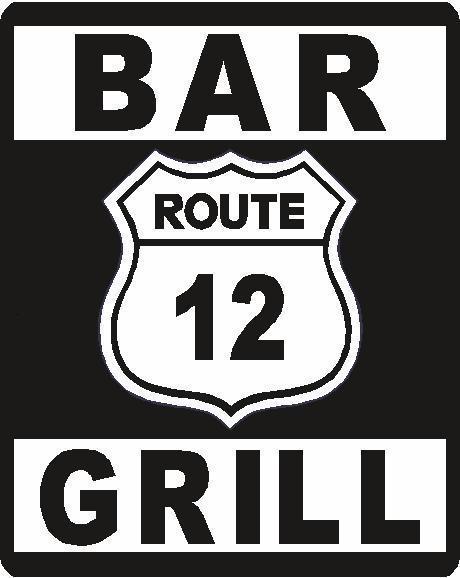
Come for The Burgers… Stay for The Beers!